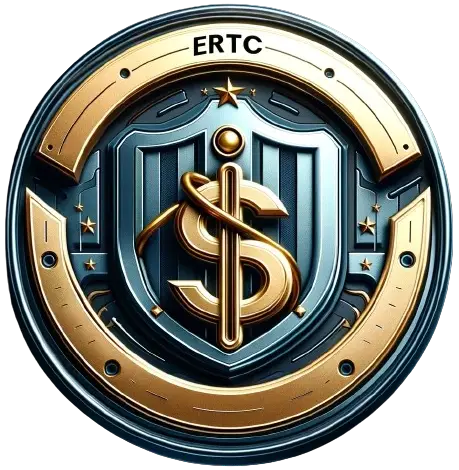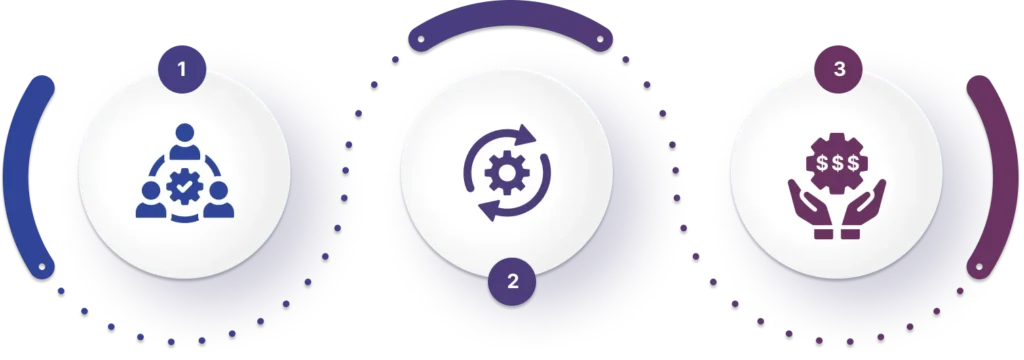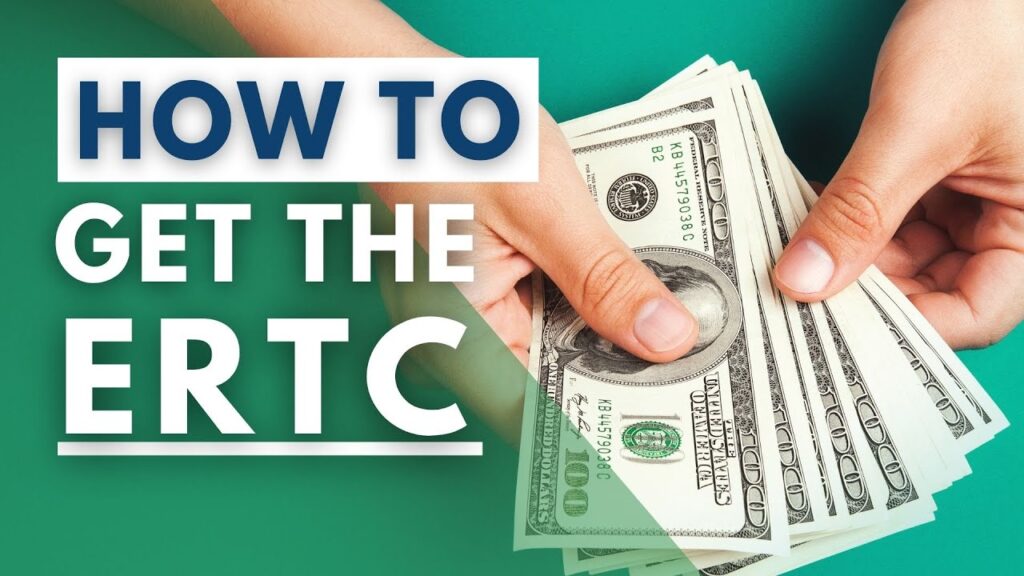-
The Employee Retention Tax Credit (ERTC) is a refundable tax credit designed to encourage businesses to keep employees on their payroll.
-
To qualify for the ERTC, a business must have experienced a significant decline in gross receipts or been subject to government-mandated full or partial suspensions.
-
Eligible businesses can claim the ERTC retroactively by filing an amended payroll tax return using IRS Form 941-X.
-
Understanding and accurately calculating qualified wages is crucial for maximizing the ERTC refund.
-
Seeking professional guidance can help ensure compliance with the ERTC requirements and optimize the refund amount.
Unlock Your Business’s Financial Potential
Let’s face it, the past couple of years have been tough for businesses. But there’s a silver lining: the Employee Retention Tax Credit (ERTC). This tax credit is like a lifeline, thrown to help businesses like yours stay afloat by encouraging you to keep your staff employed. And the good news? You might be able to claim it retroactively. That’s right, even if you didn’t claim the ERTC when you first filed your taxes, there’s still a chance to get that money back.
Understanding ERTC Essentials
First things first, let’s get to the heart of what the ERTC is. Imagine you’re running a lemonade stand that’s hit by a sudden, out-of-the-blue snowstorm. Business plummets. The ERTC is like a warm blanket offered by the government to help you keep your lemonade crew employed until the sun comes back out. In more technical terms, it’s a refundable tax credit that you can claim for wages paid to employees during certain periods of the pandemic.
Key Deadlines and Retroactive Claims
Most importantly, don’t let the clock run out on this opportunity. You have a three-year window to amend your payroll taxes and claim the ERTC for past quarters. That means if you missed out in 2020 or 2021, you can still amend your returns and potentially get a substantial refund. It’s like finding a forgotten gift card in your wallet – except it could be worth tens of thousands of dollars.
But remember, just because the window is three years wide doesn’t mean you should dawdle. The sooner you file, the sooner you could have that refund in hand. And we’re talking about a refund that could be a game-changer for your business’s cash flow.
Now, let’s dive into the specifics of eligibility and claiming your ERTC refund – because that’s where the magic happens.
Calculating Qualified Wages and Health Expenses
Let’s get down to brass tacks. Calculating qualified wages isn’t just about tallying up paychecks. It’s about understanding which wages qualify and how they interact with other tax credits you’ve claimed. Here’s the deal: qualified wages are the wages you’ve paid to employees during the time your business was affected by COVID-19 restrictions or when your revenue took a nosedive.
And it’s not just wages; we’re also talking about health expenses. If you’ve been contributing to your employee‘s health insurance, those costs might count towards your ERTC. But remember, you can’t double-dip. If you’ve used those same wages or health expenses to claim another credit, like the Paid Leave Credit under the Families First Coronavirus Response Act, they’re off the table for the ERTC.
The Role of Expert Guidance in ERTC Optimization
Now, you might be thinking, “This sounds complicated, can I do it myself?” Sure, you could try to navigate these waters solo, but here’s where expert guidance can be your compass. Tax professionals who specialize in the ERTC have seen it all. They know the ins and outs, the common errors, and the latest IRS guidance. They can help you maximize your refund while steering clear of compliance issues.
When to Seek Professional Help
Think of it this way: if you’re planning to claim a significant amount, or if your business has a complex structure, it’s time to call in the cavalry. The same goes if you’re juggling multiple forms of COVID-19 relief or if you’re just not sure about your eligibility. In these cases, a professional can be the difference between a smooth sailing claim and a shipwreck.
The Financial Impact of Professional Advice
Here’s the bottom line: hiring a tax professional might cost you upfront, but their expertise can lead to a larger refund. They can identify additional qualifying wages or health expenses that you might have missed. Plus, they can help you file your claim faster, which means you could get your refund sooner. It’s an investment that often pays for itself.
Besides that, tax pros stay up-to-date on the latest changes. The IRS has been known to update guidance on the ERTC, and you don’t want to be caught unaware. A tax pro will ensure your claim is compliant with the latest rules, reducing the risk of an audit down the line.
Avoiding Common ERTC Claim Mistakes
Even the savviest business owners can trip up on the ERTC. One of the most common mistakes? Not understanding how the ERTC interacts with other relief programs like the Paycheck Protection Program (PPP). Here’s the thing: you can’t claim the ERTC on wages that were paid for by a forgiven PPP loan. That’s a big no-no.
Understanding Dual Benefit Pitfalls
Therefore, you need to carefully track how every dollar of your PPP loan was spent if you’re also claiming the ERTC. The IRS isn’t keen on double-dipping, and they’ll be checking to make sure you’re not claiming the same wages twice.
Another pitfall is not keeping adequate records. If the IRS comes knocking for an audit, you’ll need to show them detailed payroll records, health plan documents, and proof of eligibility. It’s like having a tidy toolbox; everything should be in its place and easy to find.
Filing Form 941-X Correctly
Filing an amended payroll tax return using Form 941-X is your key to unlocking the ERTC. But this form is not for the faint of heart. It’s complex, and if you make a mistake, it could delay your refund or trigger an audit. That’s why getting it right the first time is crucial. And guess what? A tax pro can help with that too.
Case Studies: Success Stories in Claiming ERTC
Let’s talk about real-life examples. I’ve seen a variety of businesses, from restaurants to retail stores, successfully claim the ERTC. For instance, a small-town diner that was hit hard by local lockdowns managed to claim over $50,000 in ERTC credits. That money helped them keep their staff employed and their kitchen cooking.
Small Business Wins
Another case involved a tech startup that saw a significant decline in sales. They thought they wouldn’t qualify because they had already received a PPP loan. But with the right guidance, they identified eligible wages not covered by the PPP and claimed a substantial ERTC refund, which fueled their product development.
The Impact on Cash Flow for Different Industries
Different industries have different success stories. For example, a manufacturing company with a large workforce was able to claim the ERTC for multiple quarters, easing their cash flow during a period of decreased demand. This allowed them to retain skilled workers and ramp up production quickly when the market rebounded.
Maximizing Refunds: Strategic Next Steps
So, what’s the next step for you? Start by reviewing your payroll records and any other relief you’ve received. Identify any gaps where the ERTC could benefit you. And if you’re feeling overwhelmed, remember that professional help is just a phone call away.
Exploring Additional Tax Credits and Incentives
But don’t stop at the ERTC. There are a plethora of other tax credits and incentives that might be available to your business. From the Work Opportunity Tax Credit (WOTC) to energy efficiency incentives, make sure you’re not leaving money on the table.
And here’s a pro tip: some of these credits can be stacked with the ERTC, which means even more financial benefits for your business. But navigating the tax code to find these opportunities is like a treasure hunt – you might need a map and some expert advice to find the hidden gems.
FAQs
Who Can Claim the Employee Retention Tax Credit?
Any business that experienced a full or partial shutdown due to government orders or a significant decline in gross receipts during the pandemic can potentially claim the ERTC. This includes businesses of all sizes and even tax-exempt organizations.
How to Calculate Your Business’s Qualifying Wages?
Qualifying wages are the total wages and health insurance costs you paid to employees during eligible periods. The calculation depends on the size of your business and whether employees were providing services during these times. It’s a bit like a puzzle, and getting the pieces right is key to maximizing your credit.
How Does Expert Guidance Streamline the ERTC Claim Process?
Expert guidance streamlines the ERTC claim process by helping you identify all eligible wages, ensuring accurate calculations, and keeping you compliant with the latest IRS rules. It’s like having a guide on a challenging hike – they keep you on the right path and help you avoid common pitfalls.
What to Do If You’ve Missed the ERTC Deadline?
If you’ve missed the deadline for claiming the ERTC in a given quarter, don’t panic. You have up to three years to amend your payroll tax returns. It’s not too late to claim what you’re entitled to, but don’t delay – the sooner you file, the sooner you could see that refund.
How to Prepare Your Business for Potential Audits?
To prepare for potential audits, maintain detailed records of all wages paid, taxes filed, and any other relief benefits you’ve used. Document everything related to your ERTC claim, including how you determined eligibility and calculated the credit. Think of it as building a fortress of evidence that can withstand any scrutiny.
FAQs
Who Can Claim the Employee Retention Tax Credit?
Whether you’re running a bustling restaurant or a quiet bookstore, if your business was hit by government-mandated restrictions or experienced a significant drop in sales during the pandemic, you might be in line for the ERTC. This includes a wide range of entities: from sole proprietorships and corporations to tax-exempt organizations. The key is showing that your business faced challenges due to COVID-19 that affected your operations or revenue.
How to Calculate Your Business’s Qualifying Wages?
For example, let’s say you own a small boutique with 10 employees. During a quarter in 2021, you paid a total of $50,000 in wages and covered $10,000 in health insurance costs. If your business qualifies, these expenses could potentially be claimed under the ERTC. But remember, you’ll need to subtract any wages used for PPP loan forgiveness or other credits.
To pinpoint the qualifying wages for your business, start by adding up all the wages you paid to employees during the periods you were eligible for the ERTC. If you had 100 or fewer full-time employees, all wages paid during eligible periods might qualify. But if you had more than 100 employees, only wages paid to employees for not working during those times would count.
How Does Expert Guidance Streamline the ERTC Claim Process?
Consider a local gym that was partially shut down due to government orders. The owner, overwhelmed by the complexity of the ERTC, sought help from a tax expert. The expert identified qualifying wages, including some the owner hadn’t considered, and assisted with the intricate calculations. As a result, the gym claimed a higher ERTC and received the funds without any hiccups.
Having a tax expert by your side is like having a personal trainer for your ERTC claim. They’ll guide you through each step, from identifying eligible periods to meticulously calculating the credit. Their expertise ensures accuracy and compliance, reducing the risk of errors that could lead to audits or delays in receiving your refund.
What to Do If You’ve Missed the ERTC Deadline?
Missed the initial deadline? Don’t fret. You have the opportunity to amend past payroll tax returns for up to three years. It’s like getting a second chance to score a touchdown after the initial play. The key is to act quickly; the sooner you amend, the sooner you can potentially boost your business’s financial health with the ERTC refund.
-
Review the quarters during which you may be eligible for the ERTC.
-
Gather all relevant payroll and health insurance expense records.
-
Consult with a tax professional to help navigate the amendment process.
-
File an amended payroll tax return using IRS Form 941-X for the relevant quarters.
-
Keep a copy of all submitted documents and any correspondence from the IRS.
How to Prepare Your Business for Potential Audits?
Preparing for potential audits is about being proactive with your paperwork. Just as you would organize your inventory or schedule, organize your tax documents with the same level of care. Keep detailed records of all wages paid and health plan expenses claimed. If the IRS decides to take a closer look, you’ll be ready to present a clear and well-documented case.
Here’s a quick checklist to help you stay audit-ready:




